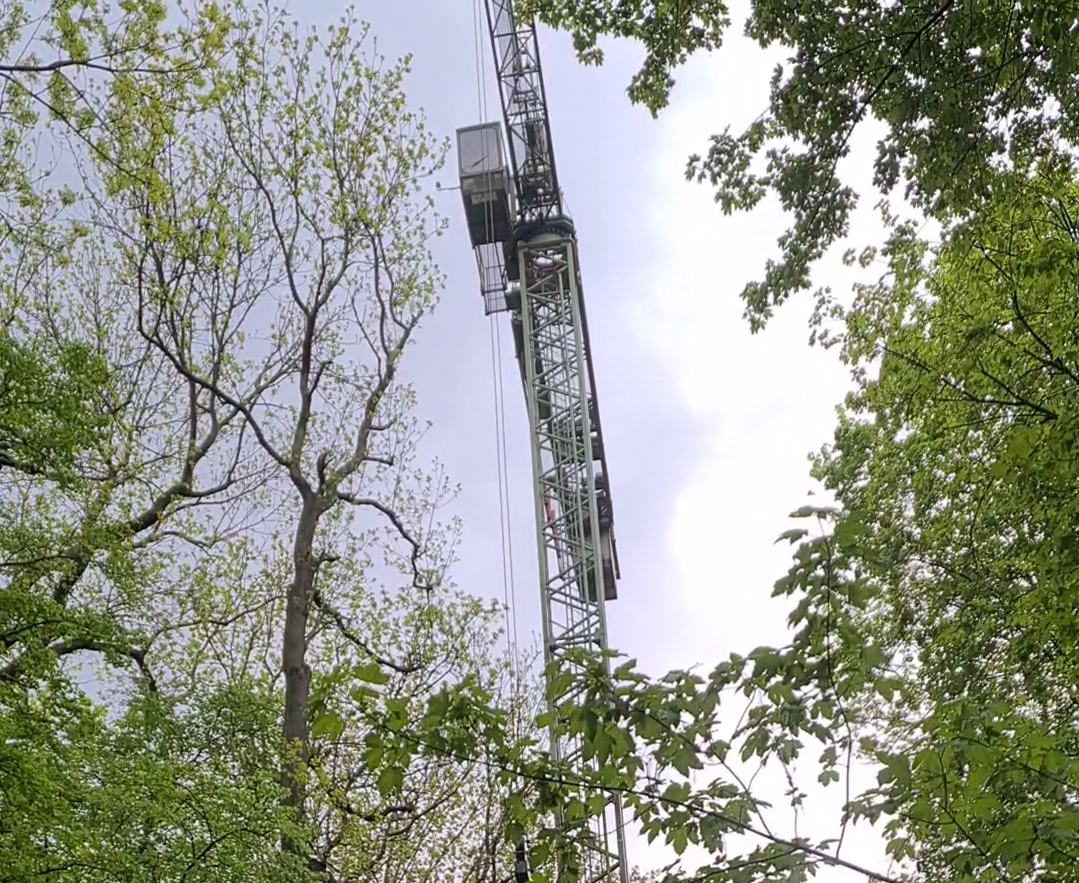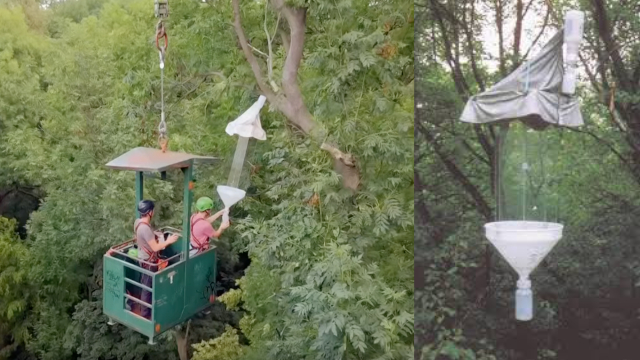With the help of the mobile crane system ‘Leipziger Auwaldkran’ we investigate the spatial and temporal structuring of the diversity of arthropods in the canopy of the Leipzig Auwaldes.
The focus here is particularly on beetles (Coleoptera), Aculeata (Hymenoptera) and lacewings (Neuropterida). The investigations are carried out using standardised cross-window traps, which are placed at a height of 20 and 25 metres in the canopy region and close to the ground in the shrub layer. Our analyses focus on the following questions:
- What is the species richness in the tree canopy?
- Are there spatial distribution patterns in the different height levels (shrub layer, lower and upper canopy region)?
- Are there temporal distribution patterns?
- Are there differences between the tree species?
The current investigations are based on the annual sampling of 2016, 2017 and 2018. We are also drawing on data from an earlier study conducted by our working group in 2002/03, thus forming the basis for long-term studies to detect any changes in biodiversity, particularly in the context of climate change.
In 2025, we began new investigations in the shrub layer, in which molecular methods (barcoding) are used in addition to faunistic questions.
The investigations are part of the ‘Leipzig Alluvial Forest Crane’ project and are funded by the German Centre for Integrative Biodiversity Research (iDiv).

